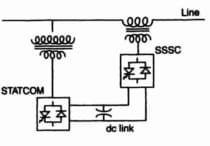 |
| Basic Electronics |
1. Electronics is that branch if engineering which deals with the application of___________.
a. Generation of small power
b. Fission of uranium nuclei
c. Electronic devices
d. Production of electronic components
2. An electron device means the device in which the conduction of electrons takes place through_________.
a. Vacuum
b. A semiconductor
c. A gas
d. A gas, semiconductor
or vacuum
b. SCR
c. Electric heater
c. Brown, Black, Red
d. Black, Black, Red
5. Neutralizing capacitors are normally used in__________.
a. Operational amplifier
b. RF and IF amplifier
c. Video amplifier
d. Audio amplifier
6. Which one of the following has the ability to act as an open circuit for dc and a short circuit for ac of high frequency__________.
a. A resistor
b. A inductor
c. A capacitor
d. None of the above
7. A device having characteristics very close to that of an ideal voltage source is__________.
a. FET
b. Transistor
c. Zener diode
d. Vacuum diode
8. The maximum number of electrons which the valence shall of an atom can have is __________.
a. 2
b. 6
c. 8
d. 18
9. According to free electron theory, electrons in a metal are subjected to_________.
a. Sinusoidal potential
b. Square-wave potential
c. Constant potential
d. Non-sinusoidal potential
10. For thermionic emission________.
a. The work function of the material has no importance
b. A material with low work
function is preferable
c. A material with high work function is preferable
11. Thermionic emission is employed in_________.
a. Photo devices
b. Only in BJTs
c. Vacuum tubes
d. Semiconductor devices
12. A photocell is illuminated by a small bright source placed 1 m away. When the same source of light is placed two metres away, the electrons emitted by the photocathode_______.
a. Are half as numerous
b. Are one-quarter as numerous
c. Each carry one quarter of their previous energy
d. Each carry one quarter of their previous moments
13. Which of the following statements is not correct ?
a. Electron emission takes place in vacuum
b. The amount of energy required for the escape of electrons varies with different materials
c. Metals with lower work function will emit electrons at lower temperatures
d. At ordinary temperature, the energy of free
electrons in the metal is more than the work function of the metal
b. Electrons from the plate
due to bombardment of the fast moving electrons emitted from the cathode
c. High velocity electrons from the cathode
15. The best vacuum tube for amplification is_________.
a. Diode
b. Triode
c. Tetrode
d. Pentode
c. Schottky defects
d. Hertz defects
17. The bonding forces in compound semiconductors, such as GaAs, arise from_________.
a. Covalent bonding
b. Ionic bonding
c. Metallic bonding
d. Combination of ionic and covalent bonding
18. Elements can reach a stable atomic structure by__________.
a. Collisions between atoms
b. Losing electrons only
c. Gaining electrons only
d. Losing or gaining or
sharing electrons
19. Which one of the following materials does not have a covalent bond ?
a. Diamond
b. Silicon
c. Metal
d. Organic polymers
20. The nature of crystal binding in germanium is________.
a. Covalent
b. Silicon
c. Sharing of electrons
between atoms
d. Sharing of variable number of electrons by a variable number of atoms
22. Conduction electrons have more mobility than holes because they_____.
a. Have negative charge
b. Are lighter
c. Need less energy to move
them
d. Experience collision loss frequently
23. Which of the following statements is correct ?
a. Copper has partially filled
conduction band
b. Energy gap between conduction and valence bands in diamond is smaller than in silicon
c. Diamond has a completely filled conduction band between empty valence band
d. Silicon has a partially filled conduction band and an empty valence band
24. An atom is said to be ionized when any one of its orbiting electron________.
a. Is completely removed
b. Comes to the ground state
c. Jumps from one orbit to another
d. Is raised to an higher orbit
25. An electron in the conduction band _________.
a. Is bound to its parent atom
b. Is located near the top of the crystal
c. Has no charge
d. Has a higher energy than an electron in the
valence band
c. Negative temperature
coefficient of resistance





0 Comments
If you have any doubt, feel free to ask.